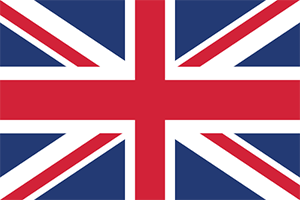UK (Northern Ireland) - Country Background Information
- Describing the forms of education in the country
- Identifying an ‘inclusive setting’ in the country
- What an ‘official decision of SEN’ means in the country
- What ‘out-of-education’ means in the country
The EASIE data collection covers all recognised forms of education at ISCED levels 02, 1, 2 and 3.
This means any type of education organised by or approved by any recognised educational provider in the public or private sector: municipality, local or regional educational provider from the public or private sector, working with/for ministries responsible for education and areas such as health, social, welfare, labour, justice, etc.
4–16
What are the typical age ranges for the ISCED levels?
| ISCED LEVEL 02 | ISCED LEVEL 1 | ISCED LEVEL 2 | ISCED LEVEL 3 |
|---|---|---|---|
| 3 | 4-10 | 11-15 | 16-17 |
Independent schools – where full-time education is provided for pupils aged from four to 16 and is not grant-aided. These schools set their own curriculum and admissions policies and are funded by fees paid by parents and income from investments.
Each independent school must be registered with the Department of Education and is inspected regularly by Education and Training Inspectorate.
Education Other than at School (EOTAS) makes educational provision for children with social, emotional, behavioural, medical or other issues who, without its provision, cannot access suitable education.
It allows children who have been expelled from, suspended from, or have otherwise disengaged from their registered school to participate in education until they achieve a new school place or are prepared for re-entry to an existing school place, or to maintain their education until compulsory school leaving age.
In the EASIE data collection, an inclusive setting is operationally defined as:
A recognised form of education where the child/learner follows education in mainstream classes alongside their peers for the largest part – 80% or more – of the school week.
The 80% time placement benchmark clearly indicates that a child/learner is educated in a mainstream class for the majority of their school week. At the same time, it acknowledges possibilities for small group or one-to-one withdrawal for limited periods of time (i.e. 20% or one day a week).
Very few participating countries can provide exact data on children/learners spending 80% of their time in a mainstream group/class. However, all countries can apply one of three agreed proxies that provide an approximation to this benchmark:
Placement in a mainstream class implies over 80% or more
Data is available on the number of hours of support allocated to a child/learner
Placement in a mainstream class implies over 50% or more.
An official decision leads to a child/learner being recognised as eligible for additional educational support to meet their learning needs (SEN Stage 3 in the Code of Practice).
An official decision of SEN is referred to as being ‘statemented’. This refers to children/learners who have a statement of SEN maintained by the Education Authority (EA) under the provisions of the Education (Northern Ireland) Order 1996 (i.e. those children/learners at Stage 3 of the Code of Practice on the Identification and Assessment of Special Educational Needs, 1 September 1998).
Statutory responsibility for securing provision for children/learners with SEN rests both with schools and the EA, which are responsible under special education legislation for identifying, assessing and, in appropriate cases, making provision for children/learners with SEN in their areas.
As of 2021, the Code of Practice sets out a three-stage approach to the process (this was previously a five-stage approach). Some children/learners may move between stages as their needs are met. Some children/learners will have their needs met locally by their own school. Some children’s/learners’ needs are so great that they require specialist intervention through the completion of a Statement of SEN by the EA.
SEN provision is matched to the child’s/learner’s individual needs. Provision may be made in special schools, designed, for example, for children/learners with particular needs (e.g. severe learning difficulties or moderate learning difficulties), in specialist provision attached to mainstream schools, or in mainstream classes themselves. It may consist of home or hospital tuition, pre-school support or placement outside Northern Ireland.
The statement (made by the EA) identifies all the child’s/learner’s special educational needs and the arrangements needed to meet those needs, either in a mainstream school or in a special school. Parents can express their preference for the school that they wish their child to attend. The Board of Governors is required to admit a child/learner with a statement that names its school. Before naming a school in the statement, the EA must consult the Board of Governors.
The EA is required to seek parental, educational, medical, psychological and social services advice, together with any other advice considered desirable. Reviews are carried out annually.
Data is based on pupils enrolled on Census day, i.e. the Friday of the first full week in October (in 2021/22 this was 8 October 2021).
Figures include funded children in voluntary and private pre-schools, nursery schools, primary (including nursery, reception and year 1–7 classes), post-primary and special schools, as well as EOTAS Centres. Figures relating to SEN are not available for independent schools, but these figures have been included in All.
In the case of SEN referrals, enrolments count as per the pupil’s main registered school. In most cases this is a mainstream school as opposed to a school with a learning support centre or a special school. Therefore, some pupils may be counted under mainstream but spend 80% or more time in a separate group/class which may actually be in a special school.
